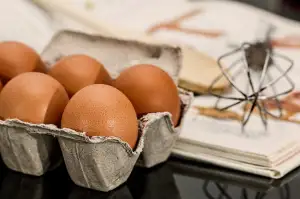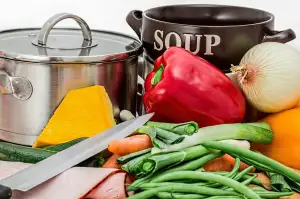Flavorful Feasts: Master the Art of Seasoning Turkey with These Simple Recipes

- Importance of seasoning for enhancing flavor
- Preparing the turkey for seasoning
- Basic seasoning ingredients for a turkey
- Step-by-step instructions for seasoning a turkey
- Thawing the turkey
- Cleaning the turkey
- Applying a dry rub
- Seasoning the cavity
- Adding aromatics
- Trussing the turkey
- Allowing the turkey to marinate
- Alternative seasoning methods
- Brining the turkey
- Injecting flavor into the turkey
- Tips for achieving a perfectly seasoned turkey
Seasoning is an essential step in preparing a succulent and flavorful turkey. It involves infusing the meat with a combination of herbs, spices, and other ingredients to enhance its taste and aroma. Seasoning not only adds depth to the flavor profile but also helps to tenderize the meat, ensuring a moist and delicious bird. Whether you're planning a traditional Thanksgiving feast or simply want to enjoy a delectable turkey dinner, mastering the art of seasoning is key. In this article, we will explore various methods and recipes for seasoning a turkey that are sure to impress your guests and leave them craving for more.
Importance of seasoning for enhancing flavor
Seasoning plays a crucial role in enhancing the flavor of a turkey. It adds depth, complexity, and richness to every bite. By properly seasoning the turkey, you can transform it from a plain protein into a mouthwatering centerpiece. The right combination of herbs, spices, and aromatics can elevate the natural flavors of the meat and create a harmonious balance of taste. Seasoning also helps to tenderize the turkey and infuse it with moisture, ensuring a juicy and succulent texture. Whether you prefer traditional flavors or want to experiment with bold and exotic spices, seasoning is the key to unlocking a truly flavorful feast.
Preparing the turkey for seasoning
Preparing the turkey for seasoning is an essential step in achieving a flavorful and succulent dish. Before seasoning, ensure that the turkey is properly thawed by placing it in the refrigerator for 24 hours per 4-5 pounds of weight. Once thawed, remove any packaging and giblets from the cavity. Rinse the turkey thoroughly under cold water to remove any excess brine or ice crystals. Pat it dry with paper towels to ensure a crispy skin when cooked. Now, your turkey is ready to be seasoned and transformed into a mouthwatering centerpiece for your feast.
Basic seasoning ingredients for a turkey
Basic seasoning ingredients for a turkey include salt, pepper, garlic powder, onion powder, paprika, and dried herbs such as thyme, rosemary, and sage. These ingredients add depth of flavor to the turkey and enhance its natural taste. It is important to use high-quality spices and herbs to ensure a delicious outcome. Experimenting with different combinations of seasonings can create unique flavors and cater to personal preferences.
Step-by-step instructions for seasoning a turkey
1. Thawing the turkey: Ensure the turkey is completely thawed before seasoning. Allow it to thaw in the refrigerator, allowing approximately 24 hours for every 4-5 pounds of turkey.
2. Cleaning the turkey: Rinse the turkey thoroughly under cold water and pat it dry with paper towels.
3. Applying a dry rub: Create a flavorful dry rub by combining herbs, spices, salt, and pepper. Rub this mixture all over the surface of the turkey, including under the skin for maximum flavor.
4. Seasoning the cavity: Sprinkle salt and pepper inside the cavity of the turkey to enhance its flavor from within.
5. Adding aromatics: Place aromatic ingredients such as onions, garlic, citrus fruits, or herbs like rosemary and thyme inside the cavity to infuse additional flavors into the meat.
6. Trussing the turkey: Use kitchen twine to tie up the legs and wings of the turkey tightly. This helps keep it moist during cooking and ensures even seasoning distribution.
7. Allowing the turkey to marinate: After seasoning, cover the turkey with plastic wrap or place it in a large resealable bag and refrigerate for at least 12 hours or overnight to allow flavors to penetrate deeply into the meat.
By following these step-by-step instructions, you can achieve a perfectly seasoned turkey that will impress your guests with its delicious flavor profile.
Thawing the turkey
Thawing the turkey is a crucial step in preparing it for seasoning. It is important to thaw the turkey properly to ensure even cooking and to prevent any potential foodborne illnesses. The safest method for thawing a turkey is to place it in the refrigerator. Allow approximately 24 hours of thawing time for every 4-5 pounds of turkey. Make sure to place the turkey on a tray or in a pan to catch any drips and prevent cross-contamination. Avoid thawing the turkey at room temperature as this can promote bacterial growth. Plan ahead and give your turkey enough time to thaw safely in the refrigerator.
Cleaning the turkey
Cleaning the turkey is an essential step in preparing it for seasoning. Start by removing the packaging and any giblets or neck that may be inside the cavity. Rinse the turkey thoroughly under cold running water, making sure to wash away any excess blood or debris. Pat the turkey dry with paper towels, both inside and out, to remove any moisture. This step is crucial for ensuring a clean and safe cooking environment for your turkey.
Applying a dry rub
Applying a dry rub is a simple yet effective way to season a turkey. A dry rub is a mixture of herbs, spices, and salt that is rubbed onto the surface of the turkey before cooking. This method allows the flavors to penetrate the meat, resulting in a flavorful and moist turkey.
To apply the dry rub, start by patting the turkey dry with paper towels. This will help the rub adhere to the skin better. Next, generously sprinkle the dry rub all over the turkey, making sure to cover every inch of the bird. Gently massage the rub into the skin, ensuring it adheres well.
The ingredients for a basic dry rub can include salt, black pepper, garlic powder, onion powder, paprika, and dried herbs like thyme or rosemary. However, feel free to experiment with different spices and herbs to create your own unique flavor profile.
Once you have applied the dry rub, let the turkey sit at room temperature for about 30 minutes to allow the flavors to meld together. This will also help to form a crust on the skin when cooked.
Remember that seasoning is subjective, so adjust the amount of salt and spices according to your taste preferences. It's always better to start with less seasoning and add more if needed.
By applying a dry rub to your turkey before cooking, you'll be able to enhance its natural flavors and create a deliciously seasoned centerpiece for your holiday feast.
Seasoning the cavity
To season the cavity of the turkey, start by removing any giblets or neck that may be inside. Rinse the cavity with cold water and pat it dry with paper towels. Next, generously sprinkle salt and pepper inside the cavity to enhance the flavor from within. You can also add herbs such as thyme, rosemary, or sage for additional aroma and taste. Be sure to distribute the seasoning evenly throughout the cavity. This step is crucial as it infuses flavors into the meat while it cooks, resulting in a more flavorful turkey.
Adding aromatics
Adding aromatics to a turkey is a fantastic way to infuse it with additional flavors and create a tantalizing aroma. Aromatics are herbs, spices, and vegetables that release fragrant oils when heated. These oils permeate the turkey, enhancing its taste and providing a delightful sensory experience.
Common aromatics used for seasoning turkey include fresh herbs like rosemary, thyme, sage, and parsley. These herbs not only add flavor but also contribute to the overall presentation of the dish. Other popular options include garlic cloves, onion slices, lemon wedges, and orange zest.
To add aromatics to your turkey, simply place them inside the cavity before cooking. This allows the flavors to penetrate the meat from within. You can also scatter some aromatics around the turkey in the roasting pan for an extra burst of fragrance.
The heat from the oven will cause these aromatics to release their oils and infuse them into the turkey as it cooks. The result is a succulent bird with layers of enticing flavors that will leave your guests craving for more.
Experimenting with different combinations of herbs and spices can take your turkey seasoning to new heights. However, be mindful not to overdo it as some aromatics can overpower the natural flavor of the meat. It's best to start with a few key ingredients and adjust according to your taste preferences.
By adding aromatics during seasoning, you can elevate your turkey from ordinary to extraordinary. The combination of herbs, spices, and vegetables will not only enhance its taste but also create an inviting aroma that will fill your kitchen and make everyone eagerly anticipate their flavorful feast.
Trussing the turkey
Trussing the turkey is an essential step in seasoning that helps to ensure even cooking and a beautifully presented bird. To truss the turkey, start by tucking the wings under the body. Then, take a long piece of kitchen twine and tie it around the drumsticks, pulling them together tightly. Next, bring the twine up and around the turkey's body, crossing it over the breastbone to hold everything in place. Finally, tie a secure knot to keep the twine in position. Trussing not only helps to maintain the shape of the turkey but also allows for more even distribution of flavors during cooking.
Allowing the turkey to marinate
Allowing the turkey to marinate is an essential step in the seasoning process. After applying the dry rub and adding aromatics, it's important to give the flavors time to penetrate the meat. Place the seasoned turkey in a large resealable bag or covered container and refrigerate for at least 12 hours, or ideally overnight. This allows the salt and spices to deeply infuse into the meat, resulting in a more flavorful and tender turkey. The marinating process also helps to lock in moisture, ensuring a juicy and succulent final product. Remember to flip the turkey occasionally during marination to ensure even distribution of flavors. Patience is key when it comes to marinating, as it greatly enhances the overall taste of your turkey.
Alternative seasoning methods
Alternative seasoning methods for a turkey offer unique ways to enhance its flavor. One popular method is brining, which involves soaking the turkey in a saltwater solution. This helps the meat retain moisture and adds subtle flavors. Another option is injecting flavor directly into the turkey using a marinade or seasoned butter. This method ensures that the flavors penetrate deep into the meat, resulting in a juicy and flavorful bird. Both brining and injecting require additional time and preparation, but they can yield delicious results that are worth the effort.
Brining the turkey
Brining is a popular method for seasoning a turkey as it helps to infuse the meat with flavor and moisture. Brining involves soaking the turkey in a saltwater solution, which allows the meat to absorb the flavors and remain juicy during cooking. To brine a turkey, start by dissolving salt and sugar in water, then add herbs, spices, and aromatics such as bay leaves, peppercorns, and garlic. Place the turkey in a large container or brining bag and pour the brine over it until fully submerged. Refrigerate for at least 12 hours or overnight. Before cooking, rinse off the brine and pat dry the turkey. This method guarantees a moist and flavorful bird that will impress your guests with its tenderness and taste.
Injecting flavor into the turkey
Injecting flavor into the turkey is another method to ensure a perfectly seasoned bird. This technique involves using a marinade or flavorful liquid and injecting it directly into the meat. The marinade can be made with a combination of herbs, spices, broth, or even fruit juices to infuse the turkey with delicious flavors. To inject the turkey, use a meat injector syringe and carefully insert it into different areas of the bird, such as the breasts and thighs. Slowly press the plunger to release the marinade deep into the meat. This method allows for even distribution of flavors throughout the turkey, resulting in a moist and flavorful end result. Remember to refrigerate the turkey after injecting to allow the flavors to penetrate further before cooking.
Tips for achieving a perfectly seasoned turkey
1. Start with a quality turkey: Choose a fresh or frozen turkey from a reputable source to ensure the best flavor and texture.
2. Use kosher salt: Kosher salt is ideal for seasoning as it dissolves easily and evenly distributes throughout the meat, enhancing the overall taste.
3. Don't skimp on herbs and spices: Experiment with different combinations of herbs like rosemary, thyme, sage, and spices such as paprika, garlic powder, and black pepper to create a flavorful blend.
4. Allow enough time for seasoning: Give your turkey enough time to absorb the flavors by seasoning it at least 24 hours before cooking. This will result in deeper flavor penetration.
5. Be generous with seasoning: Don't be afraid to liberally apply the dry rub or brine solution to ensure every bite is packed with deliciousness.
6. Consider marinating overnight: For an extra burst of flavor, let your seasoned turkey marinate in the refrigerator overnight before cooking. This will infuse the meat with even more taste.
7. Baste during cooking: While roasting the turkey, baste it regularly with pan drippings or a flavorful liquid like broth or wine to add moisture and enhance the seasoning.
8. Rest before carving: After removing the turkey from the oven, allow it to rest for about 20-30 minutes before carving. This allows the juices to redistribute throughout the meat, resulting in a moist and well-seasoned bird.
By following these tips, you'll be able to achieve a perfectly seasoned turkey that will impress your guests and leave them craving for more!
Mastering the art of seasoning is key to creating a mouthwatering turkey that will leave your guests begging for seconds. By following these simple recipes and techniques, you can elevate the flavor of your turkey to new heights. Whether you choose to use a dry rub, brine, or inject flavor, the key is to allow the seasonings to penetrate the meat and enhance its natural flavors.
Remember to thaw and clean your turkey properly before applying any seasonings. This ensures that the flavors are evenly distributed throughout the bird. Applying a dry rub or seasoning the cavity with aromatic ingredients adds depth and complexity to the taste.
Trussing the turkey not only helps it cook more evenly but also keeps all those flavorful juices locked inside, resulting in a moist and tender meat. Allowing the turkey to marinate for some time allows the flavors to meld together, intensifying their impact on your taste buds.
For those looking for alternative methods, brining or injecting flavor into the turkey can be excellent options. Brining involves soaking the turkey in a saltwater solution infused with herbs and spices, while injecting involves using a marinade syringe to directly infuse flavor into the meat.
To achieve a perfectly seasoned turkey, remember these tips: be generous with your seasonings, ensuring they cover every inch of the bird; adjust seasonings according to personal preference; and always use fresh ingredients for optimal flavor.
In conclusion, seasoning is an essential step in preparing a deliciously flavored turkey. With these simple recipes and techniques at your disposal, you can confidently create unforgettable feasts that will delight everyone's taste buds. So go ahead, master the art of seasoning and savor every bite of your flavorful masterpiece!
Published: 18. 02. 2024
Category: Recipes



